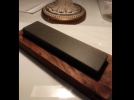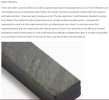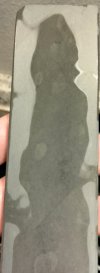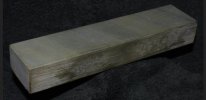- Messages
- 1
Many people have identified this as a Llyn Idwal, I have identified as the grecian type. But it is uncharacteristic as the grecian type because the grecian types are typically a lot softer. The Stone that I own Is green under the microscope and the specs are blue black just like the cutlers green. It is way denser and heavier than any Llyn Idwal out there. I'd say its at at least 11k. This article mentions the cutlers green is very similar. I know in my heart 100% without a doubt the stone I have in my possession is the cutlers green stone. It is unlike anything else I have encountered. Even amongst the hundreds of Llyn idwals I have viewed nothing even comes close to the color and pattern. IT even has this mackerel ribbing in it that is symmetrical. I know people will argue for days that this is not it, But I know that it is. The more I dig the more it fits the description of it. 




